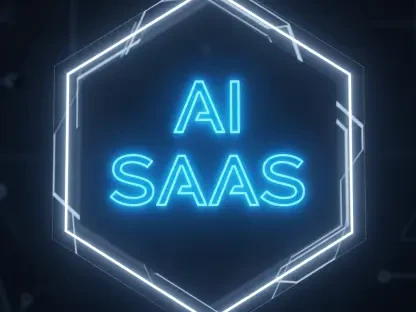In an era marked by rapid technological advancements, the integration of Robotic Process Automation (RPA) and Agentic Artificial Intelligence (AI) is reshaping operational landscapes within the public sector. Singapore stands at the forefront of this transformative wave, demonstrating how innovative technologies can redefine traditional enterprise workflows. The amalgamation of AI’s dynamic adaptability with RPA’s precision introduces unprecedented opportunities for enhanced efficiency and resilience, challenging the status quo of public sector operations globally. This necessitates a close examination of agentic automation, a paradigm shift characterized by collaborative automation between machines and humans.
Integration of AI and RPA Synergistic Approach
Transformative Potential of Agentic Automation
Agentic automation, combining RPA and AI, propels the public sector into a realm where tasks too complex for conventional automation are efficiently managed. Unlike traditional automation, which only handles repetitive, rule-based tasks, this innovative approach facilitates nuanced operations such as document processing and resource management with remarkable accuracy. AI agents exhibit context-awareness and adaptability, streamlining urban planning and healthcare processes. In urban planning, AI-driven simulations can test different scenarios, predict outcomes, and optimize resource allocation, whereas healthcare systems see accelerated processes in drug discovery and patient diagnosis through complex data analyses, fundamentally altering how these sectors function.
Overcoming Traditional Automation Limitations
Traditional automation paradigms face limitations, often restricted to straightforward tasks with defined protocols. By contrast, agentic automation transcends these boundaries, enabling seamless operation even in unpredictable environments. The strategic pivot toward AI-powered systems fosters innovation and efficiency, resulting in sophisticated workflows capable of adaptive resource deployment and dynamic service delivery. This shift enables public sectors to concentrate resources where they are most needed, enhancing overall operational efficacy and resource conservation. Furthermore, by leveraging AI’s learning capabilities, the system can refine operations continuously, optimizing processes over time and adapting to new challenges as they arise.
Collaboration and Human Oversight: Essential Components
The Role of Artificial Intelligence Agents
AI agents in public sector automation take on roles akin to intelligent assistants, executing tasks with contextual understanding and autonomy. These agents work alongside human overseers, who ensure operations remain aligned with regulatory frameworks. By facilitating critical judgment where necessary, human interaction becomes integral in guiding AI-driven processes. This collaboration exemplifies how humans and machines can jointly navigate complex workflows, such as urban planning scenarios that require multifaceted decision-making and adaptability. With AI agents handling high-volume data tasks, human oversight remains indispensable for tasks requiring ethical considerations or human intuition, safeguarding the need for compassionate, empathetic decision-making.
Upholding Compliance and Security Standards
Ensuring robust compliance and security protocols is paramount in implementing agentic automation. Trust Layer and Context Grounding capabilities within automation platforms are essential in maintaining regulatory adherence. Software-defined governance mechanisms allow seamless monitoring of AI agent deployments, ensuring operations uphold stringent security standards. Validating AI-driven processes demands thorough inspection and continual oversight, integrating human governance with technological precision. This dual approach enhances public sector reliability, assuaging concerns about data privacy and procedural integrity. Effective implementation hinges on meticulous planning and execution, ensuring that technological advancements align with legal and ethical standards while harnessing AI’s potential for societal benefit.
Preparing Public Sector Employees for Technological Evolution
Upskilling for Agentic Automation
As public sector operations embrace agentic automation, equipping the workforce with necessary skills becomes imperative. Initiatives like UiPath’s Upskill to Agentic Automation project serve to bolster employee capabilities in managing these systems. These educational efforts underscore the importance of continued learning, offering comprehensive training modules and expert mentorship. With self-paced learning options and collaborative environments, public servants are poised to navigate technological complexities confidently. By nurturing a tech-savvy workforce, the public sector can sustain its commitment to service excellence, driving innovation and fostering adaptability essential for ongoing automation success.
Evolving from Executors to Intelligent Assistants
The evolving role of AI, transitioning from mere executors to intelligent, contextually aware assistants, marks a pivotal shift in public service delivery models. These advanced platforms facilitate intuitive interactions, offering round-the-clock citizen interfaces that enhance service accessibility and satisfaction. Such models promise transformative outcomes in public service efficacy, empowering staff to focus on strategic objectives and fostering a culture of innovation and responsiveness. This evolution leverages AI’s potential to streamline everyday operations, promoting efficiency while ensuring the human element remains integral to decision-making and service provision. Digital transformation, thus, becomes a cornerstone of future-ready public sectors, advancing integration of AI within their frameworks.
The Path Forward: Strategic Implementation of Agentic Automation
Redefining Citizen Experiences
The integration of agentic automation stands poised to reshape citizen interactions with public services, aligning technological precision with empathy-driven service delivery. By marrying human insight with machine efficiency, public sectors can address societal challenges more effectively, introducing seamless accessibility and personalization into citizen engagement. This progression toward AI-integrated operations reflects a shift toward enhanced service delivery capabilities that prioritize citizen satisfaction and streamline crucial services. The potential exhibited by agentic automation extends beyond individual tasks, demonstrating a holistic advancement in public service frameworks that prioritize strategic alignment with the demands and expectations of the populace.
Advanced Automation: Democratizing Efficiency
In today’s world, where technology is rapidly advancing, the integration of Robotic Process Automation (RPA) and Agentic Artificial Intelligence (AI) is transforming how the public sector operates. Singapore is leading this innovative movement, showcasing how these cutting-edge technologies can reshape traditional business processes. The combination of AI’s flexible adaptability and RPA’s precise execution opens doors to new levels of efficiency and resilience, posing significant challenges to conventional public sector operations worldwide. This significant shift calls for a closer look at agentic automation, which embodies a new paradigm of collaboration between humans and machines. By seamlessly blending human ingenuity with machine accuracy, this hybrid approach redefines how work is accomplished in government settings, fostering an environment of enhanced productivity and adaptability. The public sector stands to benefit immensely from these advancements, setting new standards for operational excellence that could serve as models for countries everywhere.









